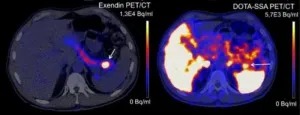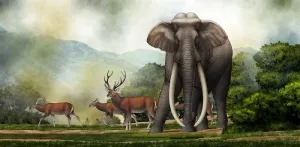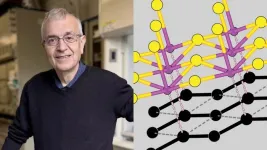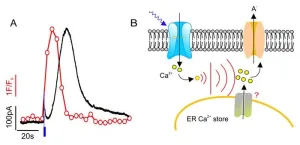(Press-News.org) Breathing thin air at extreme altitudes presents a significant challenge—there’s simply less oxygen with every lungful. Yet, for more than 10,000 years, Tibetan women living on the high Tibetan Plateau have not only survived but thrived in that environment.
A new study led by Cynthia Beall, Distinguished University Professor Emerita at Case Western Reserve University, answers some of those questions. The new research, recently published in the journal Proceedings of the National Academy of Sciences of the United States of America (PNAS), reveals how the Tibetan women’s physiological traits enhance their ability to reproduce in such an oxygen-scarce environment.
The findings, Beall said, not only underscore the remarkable resilience of Tibetan women but also provide valuable insights into the ways humans can adapt in extreme environments. Such research also offers clues about human development, how we might respond to future environmental challenges, and the pathobiology of people with illnesses associated with hypoxia at all altitudes.
“Understanding how populations like these adapt,” Beall said, “gives us a better grasp of the processes of human evolution.”
The study
Beall and her team research studied 417 Tibetan women age 46 to 86 who live between 12,000 and 14,000 feet above sea level in location in Upper Mustang, Nepal on the southern edge of the Tibetan Plateau.
They collected data on the women’s reproductive histories, physiological measurements, DNA samples and social factors. They wanted to understand how oxygen delivery traits in the face of high-altitude hypoxia (low levels of oxygen in the air and the blood) influence the number of live births—a key measure of evolutionary fitness.
Adaptation into thin air
They discovered that the women who had the most children had a unique set of blood and heart traits that helped their bodies deliver oxygen. Women reporting the most live births, had levels of hemoglobin, the molecule that carries oxygen, near the sample’s average, but their oxygen saturation was higher, allowing more efficient oxygen delivery to cells without increasing blood viscosity; the thicker the blood, the more strain on the heart.
“This is a case of ongoing natural selection,” said Beall, also the university’s Sarah Idell Pyle Professor of Anthropology. “Tibetan women have evolved in a way that balances the body’s oxygen needs without overworking the heart."
A window into human evolution
Beall’s interdisciplinary research team, which included longtime collaborators Brian Hoit and Kingman Strohl, from the Case Western Reserve School of Medicine, and other U.S. and international researchers, conducted fieldwork in 2019. The team worked closely with local communities in the Nepal Himalayas, hiring local women as research assistants and collaborating with community leaders.
One genetic trait they studied likely originated from the Denisovans who lived In Siberia about 50,000 years ago; their descendants later migrated onto the Tibetan Plateau. The trait is a variant of the EPAS1 gene that is unique to populations indigenous to the Tibetan Plateau and regulates hemoglobin concentration. Other traits, such as increased blood-flow to the lungs and wider heart ventricles, further enhanced oxygen delivery. These traits contributed to greater reproductive success, offering insight into how humans adapt to lifelong levels of low oxygen in the air and their bodies.
END
Evolution in action: How ethnic Tibetan women thrive in thin oxygen at high altitudes
New study from Case Western Reserve University reveals link between oxygen delivery and reproductive success among women living on the high Tibetan Plateau
2024-10-21
ELSE PRESS RELEASES FROM THIS DATE:
Microbes drove methane growth between 2020 and 2022, not fossil fuels, study shows
2024-10-21
Microbes in the environment, not fossil fuels, have been driving the recent surge in methane emissions globally, according to a new, detailed analysis published Oct 28 in the Proceedings of the National Academy of Sciences by CU Boulder researchers and collaborators.
“Understanding where the methane is coming from helps us guide effective mitigation strategies,” said Sylvia Michel, a senior research assistant at the Institute of Arctic and Alpine Research(INSTAAR) and a doctoral student in the Department of Atmospheric and Oceanic Sciences at CU Boulder. “We need to know more about those emissions to ...
Re-engineered, blue light-activated immune cells penetrate and kill solid tumors
2024-10-21
HERSHEY, Pa. — Immunotherapies that mobilize a patient’s own immune system to fight cancer have become a treatment pillar. These therapies, including CAR T-cell therapy, have performed well in cancers like leukemias and lymphomas, but the results have been less promising in solid tumors.
A team led by researchers from the Penn State College of Medicine has re-engineered immune cells so that they can penetrate and kill solid tumors grown in the lab. They created a light-activated switch that controls protein function associated with cell ...
Rapidly increasing industrial activities in the Arctic
2024-10-21
The Arctic is threatened by strong climate change: the average temperature has risen by about 3°C since 1979 – almost four times faster than the global average. The region around the North Pole is home to some of the world’s most fragile ecosystems, and has experienced low anthropogenic disturbance for decades. Warming has increased the accessibility of land in the Arctic, encouraging industrial and urban development. Understanding where and what kind of human activities take place is key to ensuring sustainable development in the region – for both people and the environment. Until now, a comprehensive assessment of this part of the world has ...
Scan based on lizard saliva detects rare tumor
2024-10-21
A new PET scan reliably detects benign tumors in the pancreas, according to research led by Radboud university medical center. Current scans often fail to detect these insulinomas, even though they cause symptoms due to low blood sugar levels. Once the tumor is found, surgery is possible.
The pancreas contains cells that produce insulin, known as beta cells. Insulin is a hormone that helps the body absorb sugar from the blood and store it in places like muscle cells. This regulates blood sugar levels. In rare cases, the beta cells malfunction, resulting in a benign tumor called ...
Rare fossils of extinct elephant document the earliest known instance of butchery in India
2024-10-21
During the late middle Pleistocene, between 300 and 400 thousand years ago, at least three ancient elephant relatives died near a river in the Kashmir Valley of South Asia. Not long after, they were covered in sediment and preserved along with 87 stone tools made by the ancestors of modern humans.
The remains of these elephants were first discovered in 2000 near the town of Pampore, but the identity of the fossils, cause of death and evidence of human intervention remained unknown until now.
A team ...
Argonne materials scientist Mercouri Kanatzidis wins award from American Chemical Society for Chemistry of Materials
2024-10-21
Mercouri Kanatzidis, a materials scientist at the U.S. Department of Energy’s Argonne National Laboratory and professor at Northwestern University, will receive the 2025 ACS Award in the Chemistry of Materials from the American Chemical Society, the nation’s leading professional organization of chemists.
The award “recognizes and encourages creative work in the chemistry of materials,” according to the citation.
At Argonne, Kanatzidis’s work has focused on the implications of a ...
Lehigh student awarded highly selective DOE grant to conduct research at DIII-D National Fusion Facility
2024-10-21
When it comes to sustainable energy, harnessing nuclear fusion is—for many—a holy grail of sorts. Unlike climate-warming fossil fuels, fusion offers a clean, nearly limitless source of energy by combining light atomic nuclei to form heavier ones, releasing vast amounts of energy in the process.
But it isn’t easy replicating and controlling the process that powers the sun.
“We eventually want to move to producing energy this way,” says Brian Leard ’21 ’25G, a ...
Plant guard cells can count environmental stimuli
2024-10-21
Plants control their water consumption via adjustable pores (stomata), which are formed from pairs of guard cells. They open their stomata when there is a sufficient water supply and enough light for carbon dioxide fixation through photosynthesis. In the dark and in the absence of water, however, they initiate the closing of the pores.
SLAC/SLAH-type anion channels in the guard cells are of central importance for the regulation of the stomata. This has been shown by the group of Professor Rainer Hedrich, biophysicist at Julius-Maximilians-Universität ...
UAMS researchers find ground beef packs bigger muscle-building punch than soy-based alternative
2024-10-21
When it comes to building muscle, not all proteins are created equal.
New research from the University of Arkansas for Medical Sciences (UAMS) reveals that 100% ground beef packs a bigger punch for muscle protein synthesis than a soy-based counterpart. In fact, the study suggests that a person would need double the amount of soy-based protein to achieve the same results.
Published in the American Journal of Clinical Nutrition, the study examined the anabolic response — how the body builds muscle — after consuming a 4-ounce beef patty versus one or two 4-ounce patties of a soy-based product. The results? Just one serving of beef did the ...
Study: AI could transform how hospitals produce quality reports
2024-10-21
A pilot study led by researchers at University of California San Diego School of Medicine found that advanced artificial intelligence (AI) could potentially lead to easier, faster and more efficient hospital quality reporting while retaining high accuracy, which could lead to enhanced health care delivery.
The study results, published in the October 21, 2024 online edition of the New England Journal of Medicine (NEJM) AI, found an AI system using large language models (LLMs) can accurately process hospital quality measures, ...
LAST 30 PRESS RELEASES:
Injectable breast ‘implant’ offers alternative to traditional surgeries
Neuroscientists devise formulas to measure multilingualism
New prostate cancer trial seeks to reduce toxicity without sacrificing efficacy
Geometry shapes life
A CRISPR screen reveals many previously unrecognized genes required for brain development and a new neurodevelopmental disorder
Hot flush treatment has anti-breast cancer activity, study finds
Securing AI systems against growing cybersecurity threats
Longest observation of an active solar region
Why nail-biting, procrastination and other self-sabotaging behaviors are rooted in survival instincts
Regional variations in mechanical properties of porcine leptomeninges
Artificial empathy in therapy and healthcare: advancements in interpersonal interaction technologies
Why some brains switch gears more efficiently than others
UVA’s Jundong Li wins ICDM’S 2025 Tao Li Award for data mining, machine learning
UVA’s low-power, high-performance computer power player Mircea Stan earns National Academy of Inventors fellowship
Not playing by the rules: USU researcher explores filamentous algae dynamics in rivers
Do our body clocks influence our risk of dementia?
Anthropologists offer new evidence of bipedalism in long-debated fossil discovery
Safer receipt paper from wood
Dosage-sensitive genes suggest no whole-genome duplications in ancestral angiosperm
First ancient human herpesvirus genomes document their deep history with humans
Why Some Bacteria Survive Antibiotics and How to Stop Them - New study reveals that bacteria can survive antibiotic treatment through two fundamentally different “shutdown modes”
UCLA study links scar healing to dangerous placenta condition
CHANGE-seq-BE finds off-target changes in the genome from base editors
The Journal of Nuclear Medicine Ahead-of-Print Tip Sheet: January 2, 2026
Delayed or absent first dose of measles, mumps, and rubella vaccination
Trends in US preterm birth rates by household income and race and ethnicity
Study identifies potential biomarker linked to progression and brain inflammation in multiple sclerosis
Many mothers in Norway do not show up for postnatal check-ups
Researchers want to find out why quick clay is so unstable
Superradiant spins show teamwork at the quantum scale
[Press-News.org] Evolution in action: How ethnic Tibetan women thrive in thin oxygen at high altitudesNew study from Case Western Reserve University reveals link between oxygen delivery and reproductive success among women living on the high Tibetan Plateau






